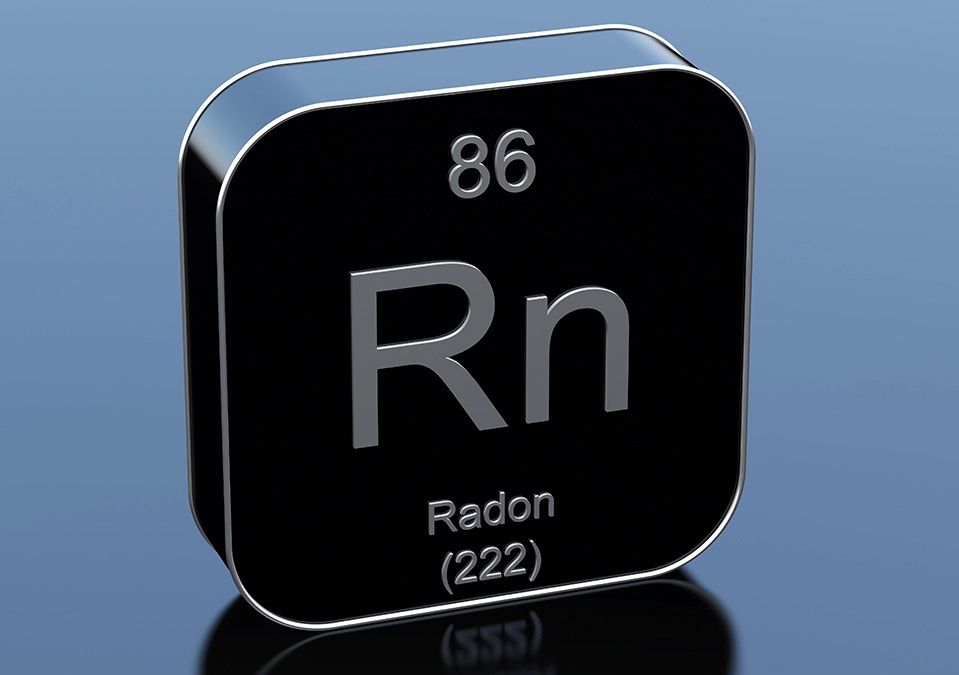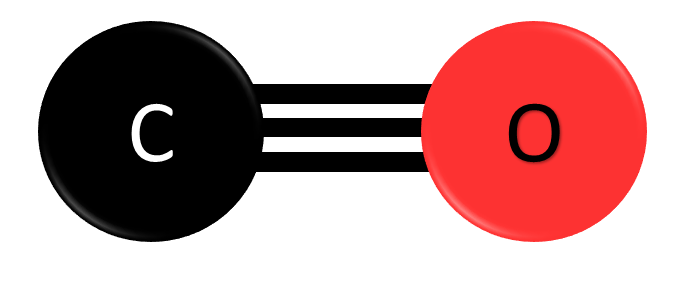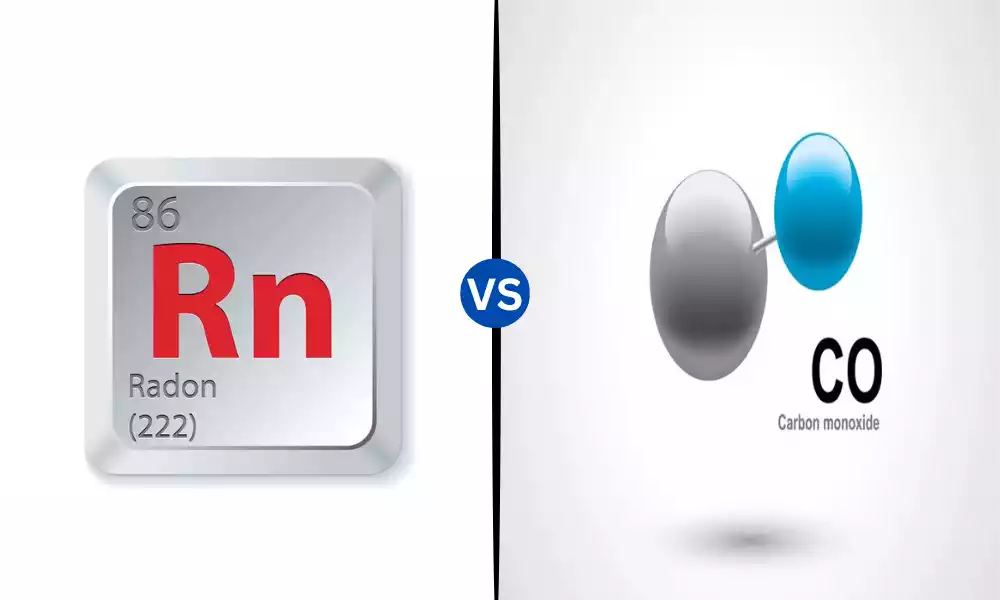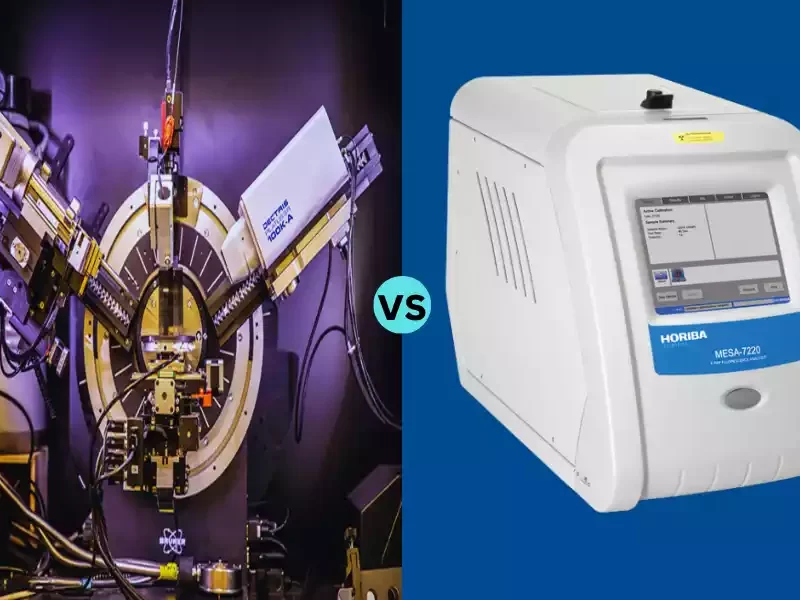Radon and Carbon Monoxide both invisible and odorless gases, pose potential health risks in homes, making awareness and mitigation crucial for a safe living environment.
Radon can be described as a non-colorless and smellless gas that is derived from the ground. It can get into homes. It’s radioactive, and it can lead to lung cancer particularly when paired with smoking cigarettes. It is possible to check for radon with specific equipment to guarantee the safety of your family members.
Carbon Monoxide is a non-odorous, colorless gas created through the combustion of fuels used in cars, stoves as well and heating units. Inhaling carbon monoxide fumes can cause death, causing symptoms such as headaches or dizziness.
Set up carbon monoxide detection devices around your home to be protected. Both gases pose no threat which is why screening and prevention are essential for a healthy living environment.
What is Radon?
Radon is a naturally occurring, invisible gas that is derived from the earth. It develops when uranium contained in rocks and soil breaks down. Because it is colorless and odorless it isn’t visible and smell it.

If radon is introduced into homes via the soil it could build up to levels that could create health risks. The most significant issue is that exposure to elevated levels of radon could cause an increase in the likelihood of developing lung cancer, particularly in smokers.
Radon testing kits are readily available to test the levels of radon within your home. If the levels are elevated, different mitigation methods can lower the amount of radon in your home. Insuring that your home is radon-free is crucial to ensuring the health of your family and avoiding health risks that can result from long-term exposure.
What is Carbon Monoxide?
Carbon Monoxide is a colorless and non-odorous gas that develops when wood, gas, and oil do not burn completely. Common sources include heating systems and automobile exhaust. Since it’s not visible and smellless you may not be aware that you’re breathing it in.

Inhaling carbon monoxide is dangerous, and even fatal since it replaces oxygen in the bloodstream. To ensure your safety it is essential to install carbon monoxide detectors installed in your home, particularly near sleeping areas.
Regular maintenance of appliances that burn fuel as well as proper ventilation are vital to stop the build-up of this invisible threat. Being aware of the dangers of carbon monoxide as well as taking measures to prevent it can ensure an improved and safer living atmosphere for everyone.
Key Difference Between Radon and Carbon Monoxide
Here’s a simple comparison chart for Radon and Carbon Monoxide:
| Aspect | Radon | Carbon Monoxide |
|---|---|---|
| Nature | The colorless, odorless gas | The colorless, odorless gas |
| Source | Comes naturally from the ground | Produced by incomplete combustion of fuels |
| Health Risk | Long-term exposure can lead to lung cancer | Breathing in can cause immediate health issues, even fatal in high concentrations |
| Detection Method | Radon test kits or professional testing | Carbon monoxide detectors |
| Prevention | Mitigation methods if levels are elevated | Proper ventilation and appliance maintenance |
| Symptoms | Typically no immediate symptoms | Headaches, dizziness, nausea, in severe cases – unconsciousness and death |
| Testing Frequency | Periodic testing recommended | Regular checks of carbon monoxide detectors |
| Regulation Standards | Specific guidelines for acceptable levels | Recommended levels set by health and safety authorities |
| Awareness Importance | Often overlooked; awareness is crucial | Widely recognized; awareness is crucial |
Sources of Radon and Carbon Monoxide
Radon is a gas that comes through the soil, mostly from the soil and rocks underneath houses. It’s a natural substance that is able to enter houses through tiny cracks inside the basement. Well water could be a source of radon. To determine the presence of radon within your home test kits. If they are There are methods to lower them.
Carbon Monoxide is created when substances such as wood, gas, or oil are burned in a way that is not complete. Common sources include stoves heaters, as well as vehicles. When these sources of fuel don’t burn correctly, carbon monoxide is discharged into the atmosphere.
It may build up in enclosed areas, such as houses, and can cause harm when inhaled. To ensure your safety it is essential to ensure adequate ventilation and to utilize appliances in a safe manner.
The installation of carbon monoxide detection devices is essential to notify you when levels are hazardous. Being aware of such sources can help us protect our homes from invisible dangers.
How to Test for Radon and Carbon Monoxide in Your Home
Testing for Radon:
-
- Radon Testing Kits Get a kit to test radon that can be purchased at hardware stores or on the internet. Follow the steps to place the test kit on the lowest living level of your residence for the prescribed period of time.
- Tests by professionals: Think about hiring an expert radon tester when want a more thorough assessment. They employ specialized equipment to give precise readings.
- Continuous Monitoring for continuous monitoring electronic radon detectors is readily available. They offer real-time data and can help in understanding the fluctuation in levels of radon.
Testing for Carbon Monoxide:
-
- Carbon Monoxide Detectors: Install carbon monoxide detectors on every surface of your home, particularly in areas where you sleep. Pick detectors with alarms that sound if high levels are detected.
- Regular checks: Periodically check the batteries of your CO detectors in order to make sure they are in good working order. Some detectors include the “test” button for manual tests.
- Professional Inspection Add carbon monoxide checks as part of the regular professional inspections of stoves, heating systems, and other appliances that burn fuel.
How to Measure Radon and Carbon Monoxide Levels
Measuring Radon Levels:
- Radon Testing Kits Find a kit to test for Radon from a retailer or on the internet. Follow the instructions on the kit to put it inside your home generally in the least living space, for the period specified. After that, you can send it to a laboratory to be analyzed.
- Professional Testing: Consider hiring a professional to conduct a comprehensive radon analysis using equipment that is specifically designed for the job.
- Electronic detectors: Use electronic radon detectors to monitor your home continuously and provide real-time data about the levels of radon within your home.
Measuring Carbon Monoxide Levels:
- Install detectors: Place carbon monoxide detectors on every level, particularly near bedrooms. The detectors will sound an alarm in the event that the levels are high.
- Regularly checked: Test your carbon monoxide detectors frequently to make sure they’re working properly and then replace the batteries if necessary.
- Professional Inspection Incorporate carbon monoxide tests during regular examinations for heating units as well as other appliances that burn fuel.
What is the Radon and Carbon Monoxide method of mitigation?
Radon Mitigation Methods:
1. Sub-Slab Depressurization:
- Description: Creating a suction point below the foundation in order to direct radon gas out of.
- How it works: A pipe is put into a foundation in order to collect the radon gas out from beneath the structure and then expel it into the air.
2. Ventilation:
- Description: Increasing the ventilation within a structure to disperse the radon.
- What it does: Improved airflow helps to prevent the buildup of radon by diluting the concentration and moving the gas outside.
3. Sealing Entry Points:
- Description: Closing gaps or cracks in the foundation, to prevent the entry of radon.
- What it does: By sealing openings that allow radon to get into the building are reduced.
4. Crawl Space Ventilation:
- Description: Ensuring proper ventilation in crawl spaces.
- How it works: Ventilating crawl spaces can help prevent the accumulation of radon in these areas.
Carbon Monoxide Mitigation Methods:
1. Proper Ventilation:
- Description Ensuring good airflow within enclosed areas.
- How it works: Adequate ventilation helps disperse carbon monoxide, thus reducing the chance of it reaching dangerous levels.
2. Regular Appliance Maintenance:
- Description Keep your appliances that burn fuel maintained.
- How it works: Regular checks and maintenance of appliances stop incomplete combustion, and reduce the production of carbon monoxide.
3. Carbon Monoxide Detectors:
- Description Installation of detectors within crucial areas of your home.
- What it does: Detectors sound alarms in the event that levels of carbon monoxide become dangerous, thereby providing an early warning to the people in the room.
4. Proper Fuel Combustion:
- Description: Ensuring complete combustion of fuels.
- What it does: Using appliances as designed and maintaining that the fuel is properly burned reduces the production of carbon monoxide.
What are the Human Health Effects of Radon and Carbon Monoxide?
- The Lung: Breathing in radon for long periods of time could cause lung damage and could cause lung cancer.
- Extra risk for smokers: If we smoke and then are exposed to Radon, it’s more dangerous to our lung tissue. The combination poses a risk.
- Tiny particles harm the lungs: Radon releases small particles when we breathe in it, and these tiny particles can cause harm to our lungs.
Carbon Monoxide:
- Feeling sick: Inhaling carbon monoxide can cause us to feel sick which can cause headaches, dizziness, or an upset stomach.
- Life-threatening In the most severe instances large amounts of carbon monoxide may be fatal as it is the replacement for oxygen within our bodies, leading to serious health problems.
- A need for proper ventilation: Proper ventilation in our homes is vital to avoid the accumulation of carbon monoxide. The use of detectors aids in keeping an eye on levels.
- Immediate action: If we ever notice symptoms or the alarm is activated, it’s vital to breathe in fresh air and get help immediately.
What are the similarities between Radon and Carbon Monoxide?
Carbon monoxide and radon have many similarities in terms of invisible threats. Both are non-odorous and colorless which makes it difficult to recognize without specific equipment. In addition, both can pose health risks when found in large quantities within the home.
While radon has been linked to lung cancer, carbon monoxide may create immediate health problems and may even lead to death. The importance of educating as well as regular testing is the same for both.
The installation of detectors to detect both gasses as well as taking proper measures to regulate ventilation are crucial to protecting yourself from unseen dangers and ensuring the health of all.
Conclusion
Radon is a gas that you cannot smell or see that is emitted from the ground. It could cause you to become sick, and potentially cause lung cancer. Kits will determine the amount of presence of radon in your home and, if there’s excessive there is a way to address it.
The other gas Carbon Monoxide, also that you cannot smell or see is a byproduct of automobiles and stoves, and inhaling it can be extremely harmful which can cause headaches and worse if you have a lot.
To ensure our safety it is recommended to use detectors and ensure that there is plenty of fresh air. These gasses are both dangerous, and it’s essential to check regularly and perform things to ensure that our homes are well-maintained and secure.



